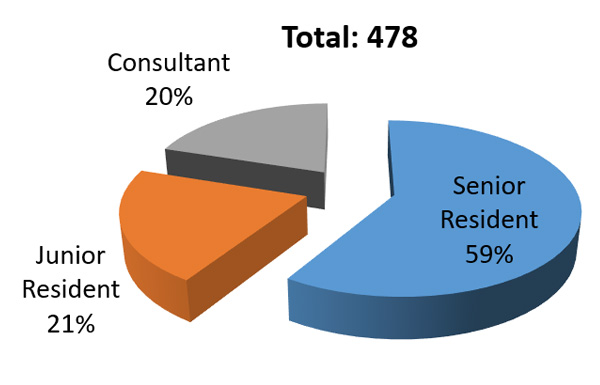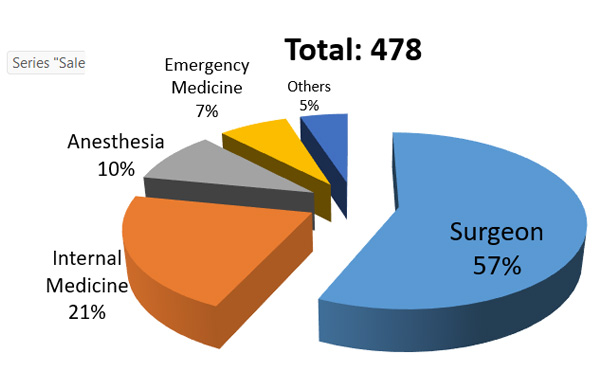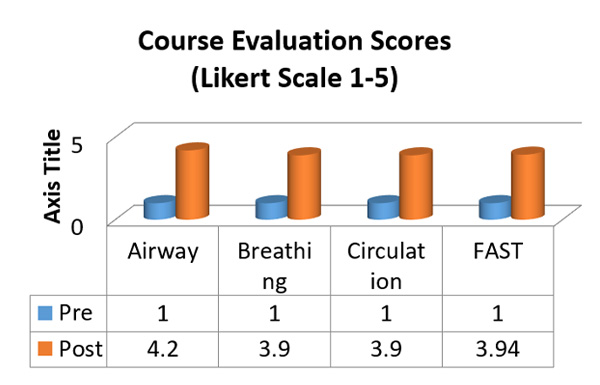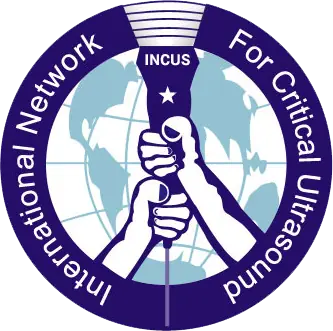WHO CCET
Point of care Ultrasound courses for Emergency & Trauma care in the South East Asian Region
Trauma is considered as neglected disease of modern society. It has developed to an epidemic proportion worldwide. It has been estimated that injuries accounted for 9% of deaths and 12% of the burden of disease worldwide in 2000. Nearly 3,500 people die on the world’s roads every day. Tens of millions of people are injured or disabled every year. More than 90% of global deaths from injuries occur in low- and middle-income countries.
Care of critically ill and injured victim is challenging in pre-hospital, emergency department and intensive care settings. It becomes more difficult when you perform trauma resuscitation and advanced cardiac life support protocols in a blinded fashion. Point of care Ultrasound has been typically described as an extension of the palpating hand and a “visual” stethoscope during the physical examination, providing both anatomic and functional information complementary to the routine physical examination.
Point of care Ultrasound (POC) is defined as the use of Ultrasound at the bedside of the patient for both diagnostic and therapeutic indications. It is focused, goal directed, reproducible and quick bedside examination of a critically ill patient.
The applications of POC Ultrasound include trauma care, emergency medicine, critical care, emergency cardiology and musculoskeletal including guided procedures.
The use of POC sonography for vascular access increases success rate, decreases complication rate and addresses patient safety. Its use in India is largely limited to nerve blocks, thoracentesis, paracentesis and less frequently to vascular access procedures. These procedures are done by anesthetist and radiologist under sonography guidance. Limitation of expertise limits the procedure being guided by ultrasound round the clock.
Acute care physicians must acquire the skill of point of care sonography during their training as a post graduate to address the patient safety issues as well as empowering their critical treatment decisions in time.
Ultrasound skill has been the radiologist domain. Over years non radiologists such as cardiologists, gynecologists and anesthetists has been using in their clinical practice.
Point of care sonography in the Southeast-Asian region is in its infancy as specialty of acute care such as emergency medicine, critical care, trauma sciences and disaster medicine are evolving.
Point of care Sonography is a part of the core competency of learning in Emergency Medicine, Trauma, Critical care, Surgery and Anesthesia residency program globally. The student has to be proficient in doing acute care ultrasound. The Indo-US initiative to develop academic emergency Medicine in India trained the first batch of instructors in emergency sonography from All India Institute of Medical Sciences, New Delhi.
The AIIMS group created AIIMS Emergency and critical care sonography program. The first course designed by the group was Emergency Sonography course Bhoi et al trained acute care physicians from India, Srilanka, Nepal, Thailand, Iran, UK and USA over a period of 5 years through AIIMS – Emergency Sonography course. Provider course is of one and half day. The content is Airway, Breathing, Circulation, Disability, Secondary survey of Trauma and Ultrasound guided CPR (table 1). Courses were disseminated via interactive lecture and hands on training. Baseline and post confidence questionnaire were based on assessment on POC sonography of Airway, Breathing and Circulation. Likert scale (1= not confident, 5 = extremely confident).16 AIIMS-UTLS courses were conducted between 2010-12. Out of 478 participants 59% were senior residents, 21% junior residents and 20% were consultants. 251 (52.51%) participants were Surgeons, 95(19.8%) Internal Medicine, 43(9%) Anesthesia, 32(6.69%) Emergency Medicine and 4.6% were from other specialty. The baseline and post course confidence levels in performing POC sonography in Airway were Likert scale (1, 4.2), Breathing (1, 3.9), Circulation (1, 3.9) and FAST were (1, 3.94). The confidence level in clinical decision making based on POC Sonography among participants were (1, 3.9).
 |  |  |
Likert scale (1=Not confident, 5= Extremely confident)
2018
1. AIIMS Emergency Sonography Course
- Date : 30-31 Jan 2018
- Venue : JPN Apex Trauma Centre, AIIMS
- 30 Doctors are Trained in Emergency and Critical Care Sonography from Different Parts of Country
2. Emergency And Critical Care Sonography For Neurosurgeons
- Date : 24-25 February 2018
- Venue : KMC Manipal
- 30 Doctors are Trained in Emergency and Critical Care Sonography for Neurosurgeons from Different Parts of Country
2017
1. AIIMS Ultrasound Trauma Life Support Course For Nurses- Instructor Course
- Date : 4th January 2017
- Venue : JPN Apex Trauma Centre, AIIMS
- 8 Nursing Instructors are trained in Ultrasound Teaching
2. AIIMS Paediatric Ultrasound Course
- Date : 21 October 2017
- Venue : St Johns, Bangalore
- AIIMS Paediatric Ultrasound Course conducted as Pre Conference Workshop of Indus EM Conference 2016.57 Doctors are Trained in Paediatric Ultrasound from Different Parts of Country
2016
1. Capacity Building for Strengthening Emergency and Trauma Care in Primary Health Care Setting- Arunachal Pradesh
- Date : 7-8 January 2016
- Venue : Administrative Training Centre, Nagarlahun, Arunachal Pradesh
- Description: Workshop on ‘Strengthening Emergency Care in Primary Healthcare Setting’ was held at Administrative Training Centre, Nagarlahun and Arunachal Pradesh. The workshop was organized by Directorate Health Service and Medical Education, Arunachal Pradesh in collaboration with AIIMS, New Delhi and WHO. The workshop was conducted for Doctors and Nurses working in primary, community health centres and district hospitals of Arunachal Pradesh. The three-day workshop focused to inculcate the concept of “Recognize, Resuscitate and Refer”. 23 Doctors and 31 Nurses and 18 Nursing Students are attended the work shop
- Content of the workshop was Basic and Advanced Life Support (BLS, ACLS), basic Emergency and Trauma Care and use Emergency Sonography in primary healthcare setting. It included Didactic lectures and hands-on skill stations
2. AIIMS Ultrasound Trauma Life Support Course for Nurses
- Date : 22-23 January 2016
- Venue : JPN Apex Trauma Centre ,AIIMS, New Delhi
- Description : 12 Nurses are Trained from AIIMS and Different hospitals of Country
